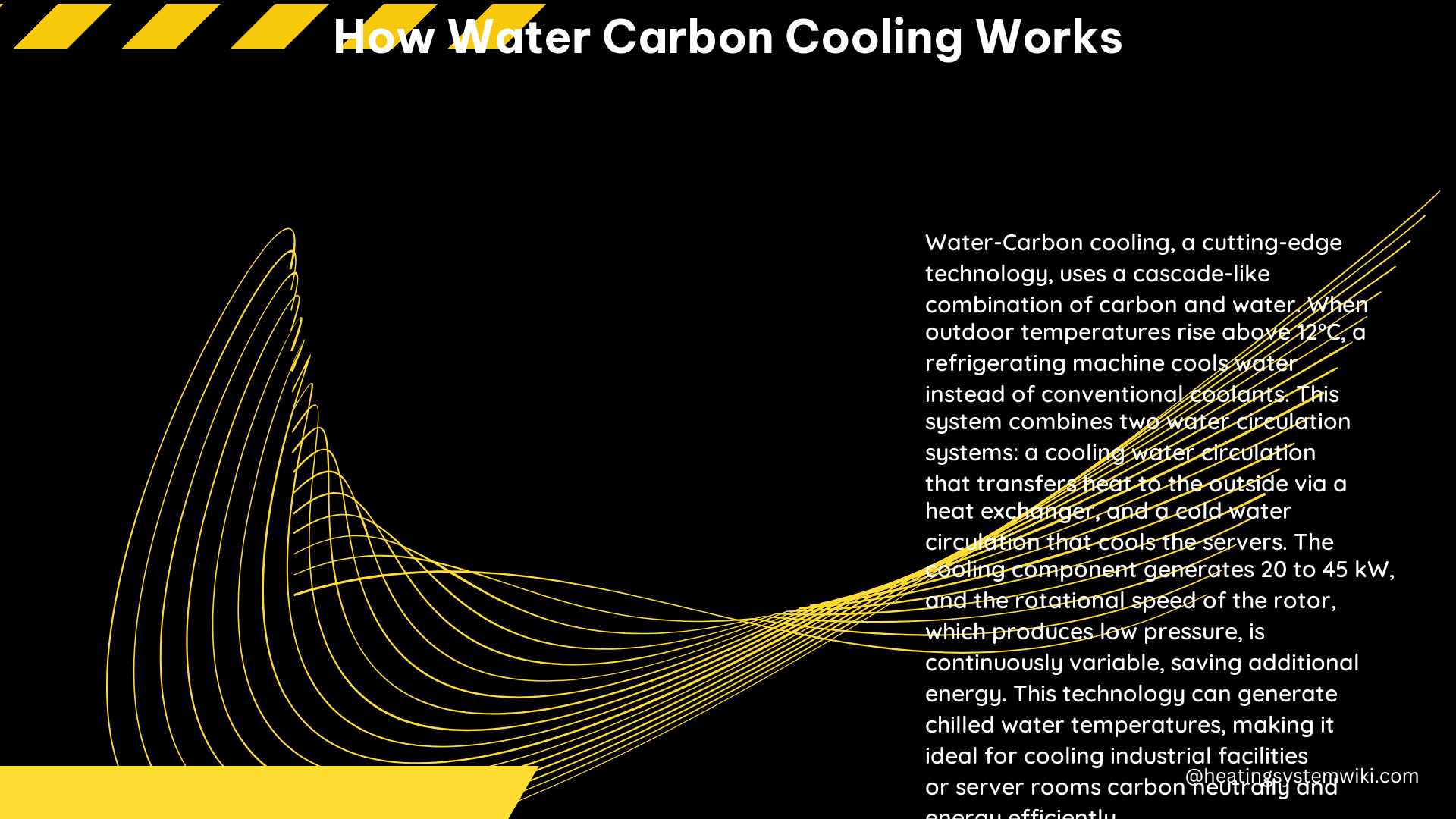Water Carbon Cooling, also known as evaporative cooling, is a highly efficient and environmentally-friendly cooling method that uses the principles of evaporation and heat transfer to lower the temperature of air or liquids. This technology has a wide range of applications, from cooling electronic devices to large-scale industrial facilities, and is becoming increasingly popular due to its energy-saving and sustainable properties.
Understanding the Basics of Water Carbon Cooling
The core concept behind Water Carbon Cooling is the evaporative cooling process. When warm air or liquid comes into contact with a wet surface, the water on that surface absorbs the heat, causing it to evaporate into a gas. As the water evaporates, it takes away heat energy, effectively cooling down the surrounding air or liquid.
The carbon component in the system plays a crucial role in enhancing the cooling efficiency. Carbon materials, such as activated carbon or graphite, have a high surface area-to-volume ratio, which increases the surface area available for water evaporation. This, in turn, amplifies the cooling effect and allows the system to operate more effectively.
Key Components of a Water Carbon Cooling System

A typical Water Carbon Cooling system consists of the following essential components:
-
Water Reservoir: This is the source of the water used in the cooling process. The reservoir can be a tank, a lake, or any other water source, depending on the scale and application of the system.
-
Water Pump: The pump is responsible for circulating the water through the system, ensuring a continuous flow and efficient heat transfer.
-
Evaporation Surface: This is the surface where the water evaporates, typically made of a porous material like carbon or a water-absorbing fabric. The larger the surface area, the more efficient the cooling process.
-
Heat Exchanger: The heat exchanger is the component that transfers the heat from the air or liquid being cooled to the water, facilitating the evaporation process.
-
Fans or Blowers: These components help to circulate the air or liquid across the evaporation surface, enhancing the cooling effect.
-
Piping and Tubing: The system requires a network of pipes and tubes to transport the water and the cooled air or liquid to the desired locations.
Factors Affecting Water Carbon Cooling Efficiency
The efficiency of a Water Carbon Cooling system is influenced by several factors, including:
-
Water Flow Rate: The rate at which the water flows through the system can significantly impact the cooling capacity. Higher flow rates generally result in more efficient heat transfer and evaporation.
-
Evaporation Surface Area: As mentioned earlier, the larger the surface area available for water evaporation, the more effective the cooling process will be. The choice of materials and the design of the evaporation surface are crucial in this regard.
-
Temperature and Humidity: The ambient temperature and humidity levels of the environment can affect the cooling performance. Higher temperatures and lower humidity levels generally result in more efficient evaporative cooling.
-
System Design and Maintenance: The overall design of the Water Carbon Cooling system, as well as its proper maintenance, can greatly influence the system’s efficiency and longevity. Factors such as proper insulation, leak prevention, and regular cleaning of the components are essential.
Applications of Water Carbon Cooling
Water Carbon Cooling systems have a wide range of applications, including:
-
Electronic Cooling: This technology is used to cool electronic devices, such as smartphones, laptops, and server racks, by dissipating the heat generated by their internal components.
-
Industrial Cooling: Water Carbon Cooling is employed in industrial facilities, such as manufacturing plants and power plants, to cool machinery, equipment, and process fluids.
-
Building Cooling: Large-scale Water Carbon Cooling systems, like the Lake Source Cooling system at Cornell University, are used to cool entire buildings or campuses by circulating water through a closed loop.
-
Automotive Cooling: Some vehicles, particularly those with high-performance engines, utilize Water Carbon Cooling systems to manage the heat generated during operation.
-
Agricultural Cooling: Evaporative cooling techniques, including Water Carbon Cooling, are used in agricultural settings to cool greenhouses, livestock facilities, and other agricultural structures.
DIY Water Carbon Cooling Systems
For those interested in implementing a Water Carbon Cooling system on a smaller scale, there are several DIY options available. These systems typically consist of a water reservoir, a pump, an evaporation surface (often made of carbon-based materials), and a fan or blower to circulate the air.
When designing a DIY Water Carbon Cooling system, it’s essential to consider factors such as the size of the space to be cooled, the available water source, the power requirements, and the overall system design. Additionally, proper sealing and regular maintenance are crucial to ensure the system’s efficiency and longevity.
Conclusion
Water Carbon Cooling is a highly efficient and environmentally-friendly cooling technology that leverages the principles of evaporation and heat transfer. By understanding the key components, factors affecting efficiency, and various applications of this technology, individuals and organizations can explore the benefits of implementing Water Carbon Cooling systems in their respective domains. Whether it’s cooling electronic devices, industrial facilities, or entire buildings, this innovative cooling solution offers a sustainable and energy-saving alternative to traditional cooling methods.
References:
– How Do Water Cooled Air Conditioners Work?
– Bringing the Water Carbon Cooling System to Life
– How Liquid Cooling Works
– Lake Source Cooling at Cornell University
– Water Carbon Cooling System Explained
